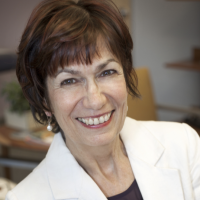I specialize in climate psychology.
My waiting list grows as more and more people seek treatment for eco-anxiety, eco-grief, and the entire range of emotional distress resulting from an awareness of our escalating climate crisis.
Mindfulness meditation is an essential part of my self-care as well as my work. I can’t imagine my life without the practices that support me in being present with my eyes, mind, and heart to the full gamut of life—the suffering and joy, the effort and repose, the solitude and engagement.
Today, there’s a wide array of teachings and styles of meditative practice available to more people than ever before. Recently, though, I’ve felt unsettled by some of these perspectives on mindfulness.
Some of the perspectives reveal a shadow side to mindfulness perpetuated by an incomplete understanding of what “present-moment awareness” really means. When it comes to climate change and other critical social issues, an incomplete practice can do more harm than good.
For beginners, a mindfulness practice often involves using a body-scan technique that draws our attention toward physical sensations and away from mental chatter. We’re guided to take note of our clothing’s texture on our skin, the pressure where our body meets the ground or chair, the temperature of the air, and the ambient sounds surrounding us—all ways our senses register their immediate and direct experience.
For many, this practice develops into a felt sense of quiet aliveness and even relief from life’s daily demands and our distracted minds. Holding a firm focus on our bodily sensations is a wonderful first step toward a deeper mindfulness practice, but if we stop here, the more profound context of mindfulness is often missing.
It’s great to learn how to cultivate calm, present-moment awareness through body sensations, but as an isolated experience, that’s like hearing a single musical note while blocking our awareness of the other tones that precede and follow. With this approach, we miss the song itself—its rhythmic patterns and melody. This body awareness practice can be mistakenly interpreted as the whole—as though all of reality is only what one is directly experiencing right here and now in the body.
If a fiery meteor was plummeting toward the meditation hall, in this narrow form of awareness, it’s not “real” to us until it becomes a direct sensory experience. We don’t bring our awareness to it until we are, in fact, on fire. And perhaps, this is an apt metaphor for the kind of attention we pay—or don’t pay—to the escalating climate crisis.
One of the best-known teachers of mindfulness is Thich Nhat Hanh, or Thay as he’s called by his millions of followers around the world. In a 2003 interview, he said:
“Meditation is about the awareness of what is going on—not only in your body and in your feelings, but all around you.”
Present-moment awareness is both an immediate and expansive experience, and a mindfulness practice invites us to extend this far-reaching presence to all our life experiences—not just our direct sensations.
Thay uses the term engaged Buddhism to describe an ideal integration of our present-moment awareness with social activism. This is his history as well as his teaching.
Thay was a young monk in the 1960s, in his native Vietnam, and witnessing the tremendous anguish of war devastating his fellow citizens inspired him to activism. He states, “Buddhism has to do with your daily life, with your suffering and with the suffering of the people around you…When bombs begin to fall on people, you cannot stay in the meditation hall all of the time.” He called monks and nuns out of their monasteries and into the streets to join the tens of thousands of community organizers to lead protests in his war-torn country.
This is the opposite of floating in a present-moment bubble, and it goes beyond being an empathetic witness. It’s meditation in action. I experience it as a marriage of compassion and grit.
The times are calling out for us to respond mindfully to the global crisis we have created. Climate change is the most monumental emergency humanity has ever faced, and it demands clear objectives, empowering actions, and skillful ways to initiate systemic transformation: inner and outer changes that we’ve yet to fully imagine and enact.
To be effective in combatting this crisis, we need to remain present with open hearts and minds to bear witness to pain in ourselves and others.
As we practice mindfulness, we gradually learn how to “just be present with” our thoughts and feelings—and this present-moment awareness organically leads to empathy and right action.
I love and value both my contemplative and activist colleagues, and I recognize the essential gifts they can offer each other. While there are seasoned practitioners and socially engaged communities that integrate both contemplation and action, there often remains a wide chasm between them.
This juxtaposition of activism and contemplation may be a modern iteration of the “doing versus being” paradox—but when we look mindfully, embrace our humanity, and move beyond the fragmented polarities of both burnout activism and limited mindfulness, we find that there’s no separation. In fact, this marriage is where we find the solution to our climate crisis.

 Share on bsky
Share on bsky







Read 0 comments and reply